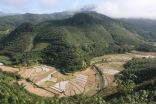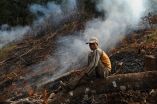(Press-News.org) KUNMING, 7 July 2015 - Increasing amounts of environmentally valuable and protected land are being cleared for rubber plantations that are economically unsustainable, new research suggests. More widespread monitoring is vital to design policy that protects livelihoods and environments.
The research was recently published in Global Environmental Change and constitutes a joint effort by scientists at the World Agroforestry Centre (ICRAF) East and Central Asia office, the Chinese Academy of Sciences, the Royal Botanic Garden Edinburgh, the University of Singapore and the East-West Center.
Although global natural rubber prices have fluctuated strongly in the last fifteen years, they are likely to continue rising as synthetic alternatives are no match for natural latex. This financial incentive, as well as the expansion of oil palm, an even more lucrative rival, has caused rubber plantations to expand beyond their tropical comfort zone in Indonesia and into the margins of continental south-east Asia.
This has brought wealth to some, but not all, say the researchers. As marginal lands are often too dry, too slanted, too high, too wet, too cold, too windy, or a combination of the above, rubber plantations require increasing amounts of input in the form of fertilizer, pesticides, and labour in order to maintain yield levels - and even then may not be profitable.
The research also suggests that climate change will render 70% of current and another 55% of future plantation areas environmentally poorly suited for rubber. Smallholder farmers' livelihoods face additional threat from price fluctuations, loss of food security, and the narrowing of income sources.
The environment also suffers. The surge in rubber demand saw valuable and even protected lands being converted into rubber plantations, drastically reducing carbon stocks, soil productivity, water availability, and biodiversity. This is particularly tragic given the high chance of failure.
"There is clear potential for loss-loss scenarios when forest is being cleared for rubber plantations that are not economically sustainable, and that have negative impacts on soils and water balance," says lead researcher Antje Ahrends from the Royal Botanic Garden Edinburgh and the World Agroforestry Centre.
Widespread monitoring of rubber expansion and its economic sustainability will prove vital for land-use planning and policy interventions. The team argue that carefully formulated payment for ecosystem services programmes, and a certification scheme for "environmentally friendly rubber" have potential to reduce the environmental impact of rubber expansion while ensuring the supply.
"Oil palm has received much more global attention than rubber, but in fact environmental and social impacts are comparable and the dynamics of the two are related. It may be time for a roundtable on sustainable rubber where the private sector, public parties and scientists can try to bridge the various interests and agree on standards," says Meine Van Noordwijk, chief science advisor at the World Agroforestry Centre.
INFORMATION:
About
World Agroforestry Centre
The World Agroforestry Centre, previously the International Centre for Research in Agroforestry (ICRAF), is an autonomous, non-profit research organization whose vision is a rural transformation in the developing world as smallholder households increase their use of trees in agricultural landscapes to improve food security, nutrition, income, health, shelter, social cohesion, energy resources and environmental sustainability. The Centre generates science-based knowledge about the diverse roles that trees play in agricultural landscapes, and uses its research to advance policies and practices, and their implementation that benefit the poor and the environment. It aims to ensure that all this is achieved by enhancing the quality of its science work, increasing operational efficiency, building and maintaining strong partnerships, accelerating the use and impact of its research, and promoting greater cohesion, interdependence and alignment within the organization.
The Centre's East and Central Asia Regional office was founded in 2002 and is located in Kunming, Yunnan, China. Regional offices exist in Beijing and Bishkek, Kyrgyzstan.
Royal Botanic Garden Edinburgh
The Royal Botanic Garden Edinburgh (RBGE) is a leading international research organisation delivering knowledge, education and plant conservation action in more than 30 countries around the world. In Scotland its four Gardens at Edinburgh, Benmore, Dawyck and Logan attract nearly a million visitors each year. It operates as a Non Departmental Public Body established under the National Heritage (Scotland) Act 1985, principally funded by the Scottish Government. It is also a registered charity, managed by a Board of Trustees appointed by Ministers. Its mission is "To explore, conserve and explain the world of plants for a better future".
Chinese Academy of Sciences
The Chinese Academy of Sciences (CAS) is the linchpin of China's drive to explore and harness high technology and the natural sciences for the benefit of China and the world. Comprising a comprehensive research and development network, a merit-based learned society and a system of higher education, CAS brings together scientists and engineers from China and around the world to address both theoretical and applied problems using world-class scientific and management approaches. The Kunming Institute of Botany is one of the Academy's research institutes.
Contact
China:
Sander Van de Moortel
Communications
World Agroforestry Centre East and Central Asia
s.vandemoortel@cgiar.org
+86 186 8719 2010
http://www.worldagroforestry.org/eca
UK:
Shauna Hay
s.hay@rbge.org.uk
0131 248 2900
07824 529 028
Sandra Donnelly
s.donnelly@rbge.org.uk
0131 248 1037
A piece of deep frozen ice and electronic gadgets may seem to have little connection (except that they are both 'cool' to have on you), but ice could now play a role in opening a new era in the electronic industry where conducting polymers, simply put plastics with electrical properties, are in great demand for practical applications.
Chemists at Pohang University of Science and Technology (POSTECH), Korea, have discovered an innovative method to form two-dimensional polyaniline (PANI) nanosheets using ice as a hard template. The product, called PANI-ICE, is reported ...
Today theoretical physicists are facing the difficulty that General Relativity is not (pertubatively) renormalizable, and find that it is very hard to construct the quantum theory of gravity with LI. A possible solution is to break the LI in the ultraviolet (UV) region, so that the theory is renormalizable and unitary. However, the invariance should be recovered in the infrared (IR), so that all of the gravitational experiments in the IR can be satisfied. According to this idea, Horava proposed a Horava-Lifshitz (HL) gravity without LI [P. Horava, Phys. Rev. D 79 (2009) ...
Recent experiments have successfully tested Einstein's general theory of relativity in a variety of ways and to remarkable precision. These experiments included spacecraft Doppler tracking, planetary radar ranging, lunar and satellite laser ranging, as well as a number of dedicated gravitational experiments in space and many ground based efforts. How can computational models keep up with the ever improving accuracy of these missions?
Finding a solution to the Einstein's gravitational field equations in the case of an unperturbed one-body problem is quite a simple task. ...
This news release is available in Japanese.
The Earth's magnetic field periodically reverses such that the north magnetic pole becomes the south magnetic pole. The latest reversal is called by geologists the Matuyama-Brunhes boundary (MBB), and occurred approximately 780,000 years ago. The MBB is extremely important for calibrating the ages of rocks and the timing of events that occurred in the geological past; however, the exact age of this event has been imprecise because of uncertainties in the dating methods that have been used.
A team of researchers based in ...
July 6, 2015, Shenzhen, China-- Mitochondrial genome (mitogenome) database demonstrated its great value on detecting wild bees in UK farms via mitochondrial metagenomics pipeline, a new approach developed by scientists from the China National Genebank (CNGB), BGI-Shenzhen.
The study published today in the journal Methods in Ecology and Evolution shows that, with mitogenome references, collecting wild bees, extracting their mixed DNA, and directly reading the DNA of the resultant 'bee soup' could finally make large-scale bee monitoring programmes feasible. This new research ...
Chicago (July 7, 2015)- Switzerland has a long history of trying to be as self-sufficient and energy independent as possible. Although its energy supply system has served it well in the past, the country is now looking to turn away from its reliance on nuclear power and seeks to compensate for the energy lost from hydropower as a result of climate change. In the latest issue of the Bulletin of the Atomic Scientists, published by SAGE, Dominic Notter of Empa discusses how the country aims to address this transition, finding a new supply mix that combines energy conservation, ...
Scientists at the University of California, Davis, have identified a key mechanism in neuropathic pain. The discovery could eventually benefit millions of patients with chronic pain from trauma, diabetes, shingles, multiple sclerosis or other conditions that cause nerve damage.
A biological process called endoplasmic reticulum stress, or ER stress, is the significant driver of neuropathic pain, said lead researchers Bora Inceoglu of the UC Davis Department of Entomology and Nematology and UC Davis Comprehensive Cancer Center, and Ahmed Bettaieb, Department of Nutrition. ...
LOS ANGELES (July 6, 2015) - Cedars-Sinai researchers have successfully tested two new methods for preserving cognition in laboratory mice that exhibit features of Alzheimer's disease by using white blood cells from bone marrow and a drug for multiple sclerosis to control immune response in the brain.
Under the two approaches, immune cells from outside the brain were found to travel in greater numbers through the blood into the brain. The study showed measurable benefits in mice, an encouraging step toward further testing of these potentially powerful strategies in human ...
New research suggests guidelines on children's exposure to radio frequency waves from technology are confusing for parents.
The review into the polices of 34 countries, carried out by Dr Mary Redmayne, from the Department of Epidemiology and Preventive Medicine at Monash University, found varying degrees of advice about children's exposure to radio frequency electromagnetic fields (RF-EMF).
RF-EMFs are emitted from technology including WiFi, tablets and mobile phones. Associated with an increased risk of some brain tumours in heavy and long-term phone users, RF-EMFs ...
ARLINGTON HEIGHTS, Ill. (July 7, 2015) - Parents of kids with severe allergies know how scary a severe allergic reaction (anaphylaxis) is. New research offers clues as to why some kids can have a second, related reaction hours later - and what to do about it.
A study in the Annals of Allergy, Asthma and Immunology, the scientific publication of the American College of Allergy, Asthma and Immunology (ACAAI), examined records of 484 children seen in an emergency department (ED) for anaphylaxis. The researchers tracked whether there was a second, follow-up reaction. Delayed ...



